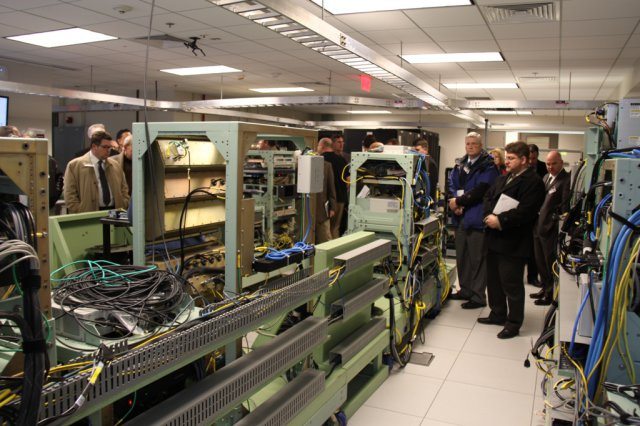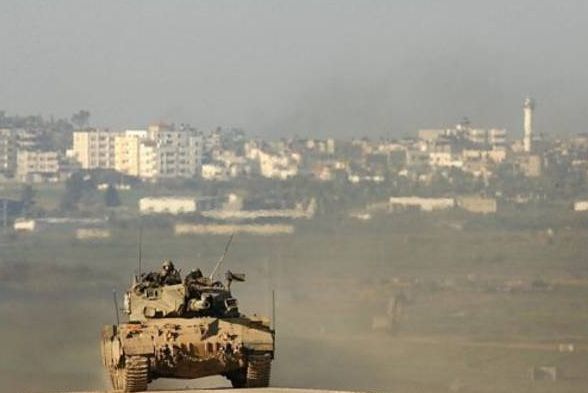Army officials hosted more than 275 industry representatives at new integration facilities at Aberdeen Proving Ground this week, stressing the service’s commitment to its new “agile” approach to modernizing the tactical communications network.
The Jan. 11 event was the second informative Industry Day held since the Army launched the Network Integration Evaluations, known as NIEs, which are semi-annual events designed to rapidly integrate and mature the tactical network. The NIEs and Agile Process will allow the Army to field “capability sets” that provide integrated connectivity from the command post to the dismounted Soldier, and update that equipment on a two-year cycle to reflect improvements in technology and changes in operational needs.
“We can’t afford to build a network capability like we build a tank,” said Col. John Morrison, director of the Army G-3/5/7 LandWarNet-Battle Command Directorate. “We want to leverage industry innovation. For this process to work, industry is a key partner.”
Industry representatives from small to large defense companies received detailed updates on criteria to participate in the Agile Process, the Army’s new quick-reaction acquisition methodology to address defined capability gaps and insert new technologies into the overall network at a lower cost. This fundamental change in business practices is even more critical in light of planned cuts in defense spending, Morrison and other senior leaders said.
“As budgets go down, this will become more important to the Army and Department of Defense,” said Maj. Gen. Genaro Dellarocco, commanding general of the Army Test and Evaluation Command. “The NIE and Agile Process are going to endure.”
Industry Day also coincided with the release of a “sources sought” notification for systems to participate in NIE 13.1, which will take place in the fall of 2012. That will be the final NIE prior to the synchronized delivery of Capability Set 13, the first integrated group of network technologies that will be fielded to up to eight brigade combat teams starting in fiscal year 2013.
Held twice a year at White Sands Missile Range, N.M., the NIEs leverage a full brigade combat team to assess new network capabilities in a robust operational environment. Prior to receiving a field tryout with Soldiers, these capabilities must pass through the laboratories at Aberdeen Proving Ground, or APG, for technology evaluation, assessment and integration. The lab assessments inform the Army’s choices on what systems will participate in the NIE and provide detailed “score cards” to industry on how their technologies performed and what could be improved in the future.
Industry representatives toured seven of the laboratories and integration facilities that support the NIE, Agile Process and capability set fielding. Built as part of the recent Base Realignment and Closure move of Command, Control, Communications, Computers, Intelligence, Surveillance and Reconnaissance, known as C4ISR, organizations to Maryland, the laboratories are linked through direct fiber optic connectivity — creating an integrated environment for government and industry to measure system performance and interoperability.
The APG facilities are already yielding tangible benefits for key Army network efforts, such as the mission command “collapse strategy” that is combining fires, sustainment, air defense and airspace product lines onto a common workstation. Engineers from General Dynamics recently used the Program Executive Office for Command, Control and Communications-Tactical, or PEO C3T, System of Systems Integration Facility for some of this integration work.
The facility recreates the environment of a brigade or division level command post, allowing engineers to simulate challenges like high volume traffic on the network.
“It was our chance to integrate in an environment that was going to be more similar to what people were going to see in the field,” software engineer Austin Murray said. “(The testing) was able to expose some of the areas where we can enhance what we’re doing.”
Other resources highlighted for industry included facilities focused on tactical radios, satellite communications, intelligence and the integration of C4ISR equipment onto various vehicle platforms.
“The synergies we have at APG allow us to take advantage of the other laboratories, integration facilities and test capabilities on the installation — and this is a tremendous asset,” said Robert Zanzalari, associate director of the Communications-Electronics Research, Development and Engineering Center, known as CERDEC, which owns several of the labs. “I think the NIE support and the capability set efforts taking place here are going to be prime examples of how this community at APG can coalesce onto a high-priority, high-visibility project for the Army. That’s important for the future of agile acquisition.”
Industry Day attendees said the experience and information exchange was valuable, especially in light of the significant changes in the Army’s network modernization strategy.
“It’s important for us to be talking to one another,” said Lori McKaig, a senior executive with the Accenture Defense group. “Given this is a totally new process, it’s more important than ever.”











